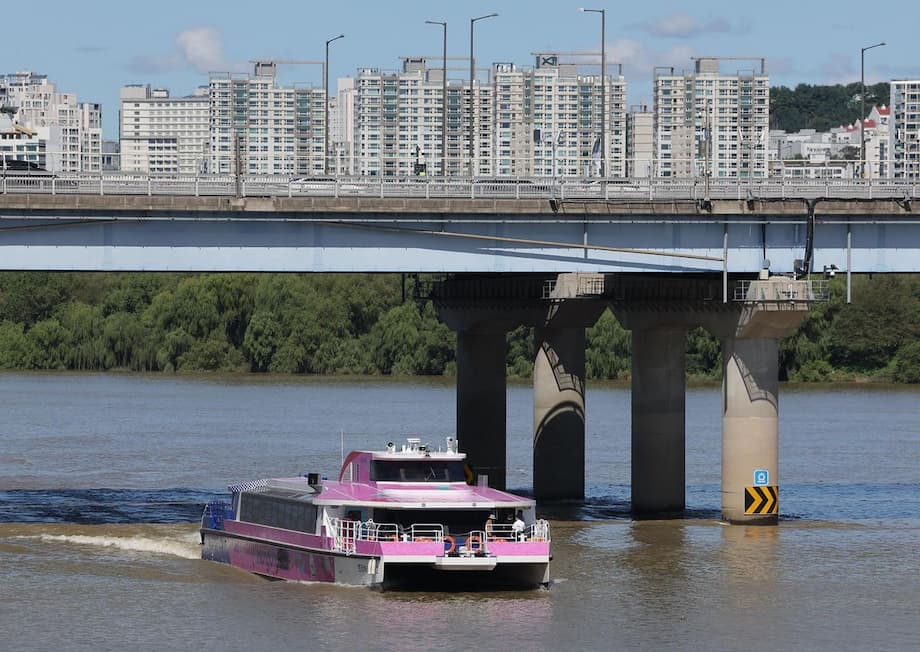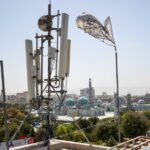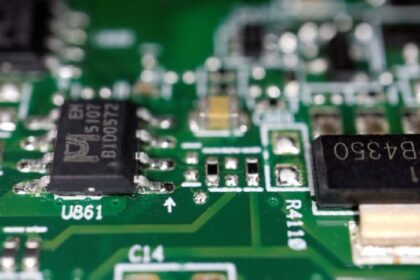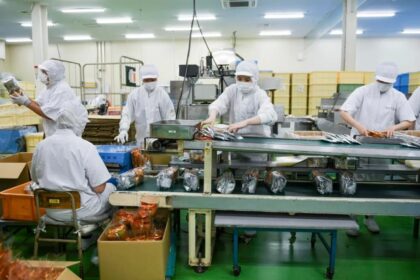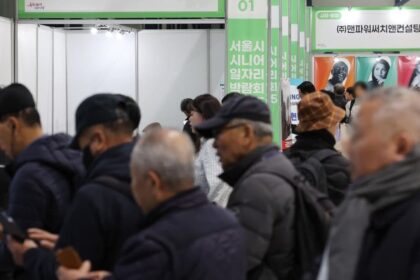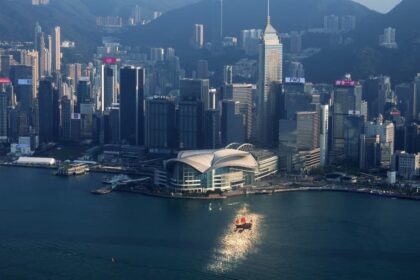A troubled launch for a high profile river transit plan
Seoul s new Hangang river bus, pitched as a clean commute and a fresh view of the city, is paused just ten days after opening. Repeated breakdowns, emergency dockings, and on board safety lapses pushed the Seoul Metropolitan Government to halt passenger service for about one month starting on Sep 29. The city says vessels will continue to run without passengers while crews and engineers work to stabilize operations and verify fixes. The high profile program, funded at 150 billion won (about 105 million dollars), was meant to prove that the Han River could carry daily commuters as well as tourists. Instead, its first week turned into a test of mechanical resilience, emergency procedures, and weather planning.
Two weekday rush hour trips ended in emergency dockings after sudden rudder failures and electrical glitches. Each incident left more than 100 people stuck on board until crews reached the nearest pier and processed refunds. Another boat turned back within minutes due to a steering fault. By the first weekend, two of the four operating vessels were sidelined for maintenance. The city said technicians corrected each defect and that the new hybrid and electric boats can be tuned during early operations.
Problems went beyond the engine room. On several boats, access to infant life jacket cabinets was blocked by ramps for wheelchairs and bicycles. Fire extinguishers showed no recent inspection tags. An equipment room that holds sensitive electrical systems was left unlocked while passengers were on board. Passengers also reported malfunctioning toilets and overflow. City officials responded that facilities were mostly sound, blaming some issues on improper use. A launch ceremony attended by Mayor Oh Se hoon was interrupted by heavy rain and low visibility, and there were two service suspensions in the first four days despite earlier assurances that stoppages would be rare.
What went wrong on the water
The new route spans 28.9 kilometers between Magok and Jamsil with seven piers, and it opened on Sep 18 with 14 trips per day. That left little cushion when any one vessel failed. During the first week, a boat bound for Jamsil stopped near Oksu after an electrical fault, while a second boat heading to Magok stalled and had to return to port. Crews performed emergency docking procedures, guided passengers to the pier, and issued refunds.
Mechanical faults
Modern river ferries rely on intertwined electrical and control systems. A rudder failure can make a boat sluggish or unable to steer in tight channels. Electrical glitches can immobilize the propulsion system or prevent a safe departure. Seoul officials described the early faults as minor in nature and said fixes were applied quickly. They also argued that these are the first eco friendly vessels to serve regular routes on the Han River, so tuning and optimization would be part of the early phase. The pattern, three mechanical incidents in ten days, raised doubts about the level of pre launch testing.
Hybrid ferries carry conventional engines alongside battery systems, while the fully electric models depend on high capacity packs and power electronics. Both setups require robust redundancy. Marine operators typically design fail safe modes that let a boat limp to a pier at reduced speed. The emergency dockings showed that the crews had practical options, but reliability in daily transit demands fewer breakdowns and faster resets after alarms.
Safety lapses on board
Emergency equipment must be reachable in seconds. Placing mobility ramps in front of infant life jacket cabinets undercuts that principle. Unlocked rooms with high voltage electronics expose both crew and passengers to risk. Gaps in fire extinguisher inspection logs suggest that routine checks were not recorded or not done. Accessibility is vital, and it can be delivered without blocking emergency gear. The early reports point to a layout and training review that should be straightforward to fix if managers prioritize it.
Response and passenger experience
Passengers described long waits during breakdowns, patchy announcements, and confusion about where to go once a boat docked out of sequence. Complaints about toilets and overflow added to the sentiment that the service was not ready for crowds. The city countered that facilities worked as designed and that misuse caused several clogs. Either way, the first impression was poor for a system trying to attract daily commuters.
Speed and schedules versus the subway
For many riders, time savings drive adoption. The city initially advertised travel times of 75 minutes for the local service between Magok and Jamsil and 54 minutes for the express. Real world results were slower. The local run stretched to 127 minutes. The express route took about 82 minutes. Add the time to reach river piers from neighborhoods or subway stations, and the subway still completes the same trip in as little as 54 minutes.
The ferries average about 17 knots, near 31 kilometers per hour. That sounds brisk on open water, but a river route with frequent stops, bridge zones that require caution, and strong currents will always cut into schedule speed. Dwelling at piers, aligning ramps for bicycles and wheelchairs, and clearing the navigation channel around busy bridges can add several minutes per stop. Reliable headways depend on both vessel performance and river conditions.
The service connects seven piers, from Magok through Mangwon, Yeouido, Oksu, Apgujeong, and Ttukseom to Jamsil. Each vessel can carry up to 199 passengers and includes a cafeteria, Wi Fi, areas for bicycles, and space for wheelchairs. A single trip costs 3,000 won, payable through common transit cards. Riders with the Climate Card can take unlimited river bus rides by paying 5,000 won on top of the monthly pass. Shuttle buses link some piers to nearby subway stations, and bike share docks are installed at the piers. The city posts updates on schedules and service notices on its official site and on major mobility apps. For official notices, see the city s Hangang Bus page here.
City response, testing period, and a revised timeline
Seoul will keep the boats running without passengers for about a month starting Sep 29. The test runs follow the current schedule order, with 14 round trips per day beginning late morning. Officials say the goal is to collect system data under normal operating loads, rehearse contingency plans, and verify that fixes hold up under repeated use. The city aims to resume passenger service by the end of October, assuming the tests pass.
Before the pause, the plan called for a rapid ramp up. By Oct 10, weekday service was set to grow to 30 round trips, with express boats running every 15 minutes during peak times. That timetable is on hold while four hybrid ferries and four electric ferries are tested. Another four hybrid boats are still awaiting delivery, for a planned total of 12 vessels.
Park Jin young, who heads the city s Future Hangang Project Headquarters, apologized to riders and laid out the testing plan. He said the city would keep public safety at the center of the restart.
About 25,000 people have used the Hangang Bus over the past 10 days, and we apologize for the inconvenience caused by the unavoidable trial operation aimed at making the service safer and more comfortable, said Park Jin young. We will conduct systematic and thorough trial runs to ensure the Hangang Bus becomes a safer and more reliable water transportation option representing Seoul.
The city has said it fixed each fault that appeared in the first week and will publish updates on the test schedule through the Hangang Bus site and mobility apps.
Politics, audits, and the fight over credibility
The Democratic Party of Korea (DPK) called for a full suspension of service and promised a thorough review during the National Assembly audit. DPK members on the Seoul Metropolitan Council argue that the project put presentation ahead of preparation.
It is a reckless project for mayoral achievement at the expense of public safety, said Park Soo bin, a spokesperson for DPK members of the council.
Mayor Oh Se hoon, a member of the People Power Party, pushed back, saying critics have distorted facts and weaponized the launch problems. He cited state audits that found no major violations and argued that the goal is to create durable public value for residents.
The project has already undergone state audits with no major violations found, Mayor Oh said. DPK lawmakers are running a factory of lies.
Accountability will hinge on how the city documents the technical root causes and the design choices that led to blocked safety gear and unlocked rooms. A credible process will show what changed between launch and relaunch, from maintenance checklists and training to pier operations and communications.
Safety basics on passenger boats
On passenger ferries, emergency gear needs to be visible, labeled, and free of obstructions. Life jacket cabinets for infants and adults should open without tools, and crews should confirm access before leaving a pier. Fire extinguishers carry inspection tags that show when checks were performed and when replacements are due. Operators lock electrical rooms to prevent accidental contact and to protect critical systems. Drills help crews practice evacuation routes, deploy portable ramps, and manage crowd flow at piers.
Weather is an operational constraint as real as a mechanical limit. Heavy rain cuts visibility and increases collision risk around bridge pilings and small craft. Rivers rise and fall, which changes current speed, pier approach angles, and clearance under bridges. Many river bus systems restrict operations below defined visibility thresholds or during strong current advisories. When a city builds schedules and rider promises, it must account for those windows when the river rules, not the timetable.
Can the project recover public trust
The path back runs through transparency and steady execution. Riders will look for a published checklist of corrective actions, clear explanations of what failed and why, and evidence that multiple layers of safety are now in place. That means a revised layout that keeps all emergency gear clear, locked equipment rooms, updated inspection logs, and safety briefings before departure.
Schedules also need a reality check. Headways and advertised travel times should reflect bridge zones, currents, and dwell times on busy piers. A staged return with frequent updates would help set expectations and reduce the risk of another blanket shutdown. The river bus can still find a role for scenic commuting and leisure trips even if it rarely beats the subway clock. Framing it as a reliable option for certain corridors and times, not an all purpose substitute, would align the promise with the physics of a working river.
Key Points
- Passenger service on the Hangang river bus is paused for about one month starting Sep 29 for no passenger test runs.
- Three mechanical failures in the first ten days led to emergency dockings, refunds, and vessel maintenance.
- Reports cited blocked infant life jacket cabinets, unlocked equipment rooms, and missing inspection tags on fire extinguishers.
- Actual travel times were slower than advertised, while the subway completes the same corridor in roughly 54 minutes.
- The route spans 28.9 kilometers across seven piers, with a planned fleet of 12 hybrid and electric vessels.
- DPK officials demand audits and accountability, while Mayor Oh defends the project and criticizes opponents.
- City leaders say safety and reliability will guide a staged return, with updates posted on official sites and mobility apps.


